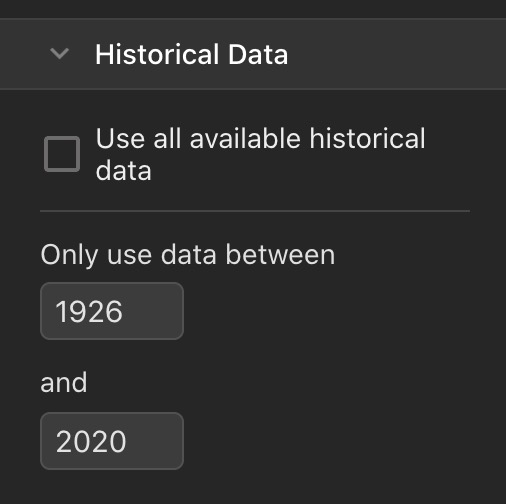Historical Data #
FI Calc runs simulations using historical data. The data set includes data from 1871 to the present day, and data from all of the available years is used for simulations by default.
If you wish, you may choose to use a subset of the historical data for running simulations.
How to Use a Subset of the Data Set #
Expand the "Historical Data" section from the Configuration, and uncheck the "Use all historical data" checkbox. Next, input the earliest year and latest year that you'd like to use from historical data.

Keep in mind: using too little data can reduce the quality of your results.
Why Might You Choose to Use Less Data? #
More data means more simulations, which may seem like it would always be a good thing. However, one of the requirements for the backtesting strategy to be effective is that you must have high quality and accurate data.
The data set used in FI Calc was compiled by Nobel Prize-winning economist Robert Shiller, which should give you some confidence that the data is of high quality. Nevertheless, some individuals choose to restrict data from 1926 and before. There are two common reasons for this:
The S&P 500 did not exist before 1926. Robert Shiller uses another data source for the price of stocks before 1926. Furthermore, index funds didn't exist until even later, and many contemporary investors' portfolios are made up primarily of index funds.
Some people feel that the market conditions from over a hundred years ago do not reflect today's economy, and are therefore an inaccurate representation of what may come in the future.
If either of these arguments resonate with you, then you have the option to restrict the data used in your simulations.
Notable Years #
| Year | Description |
|---|---|
| 1871 | The earliest year in Shiller's data set |
| 1926 | The year the S&P 500 was created |
| 1992 | The final year in Bengen's original paper |
| 1995 | The final year in The Trinity Study |
